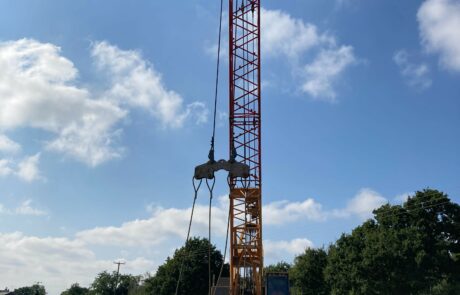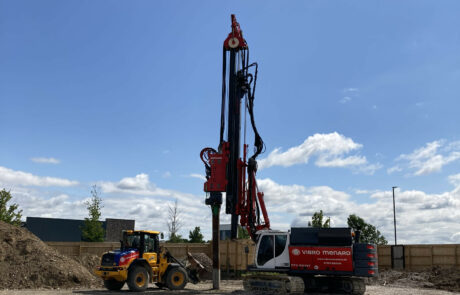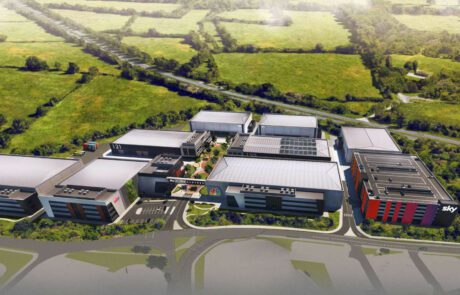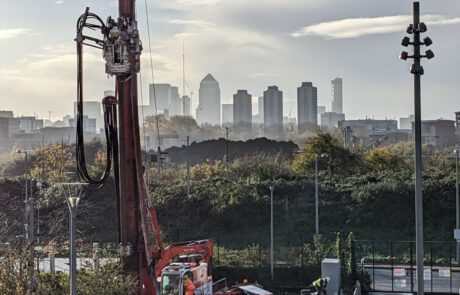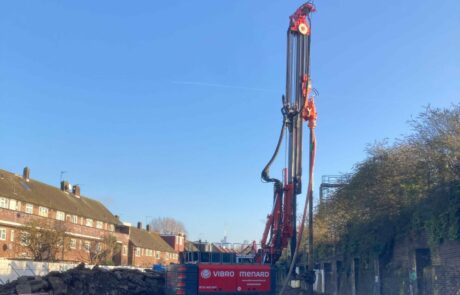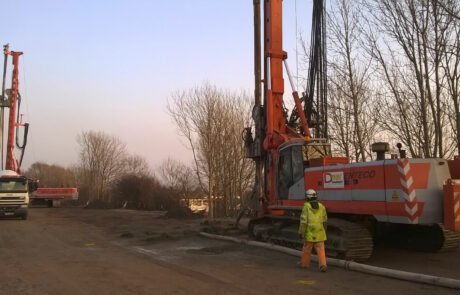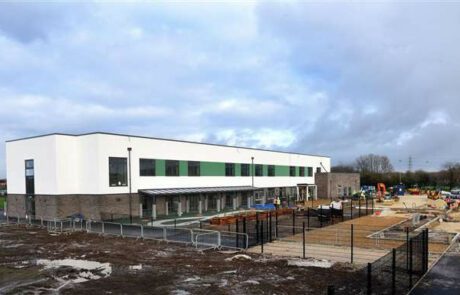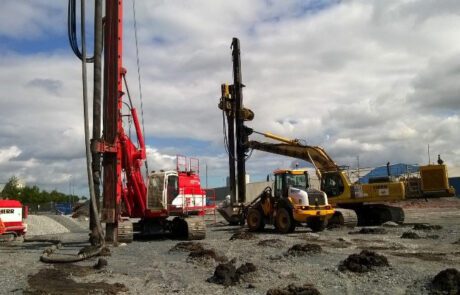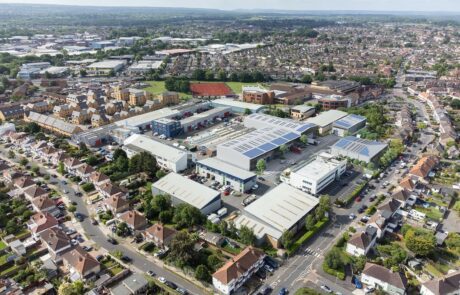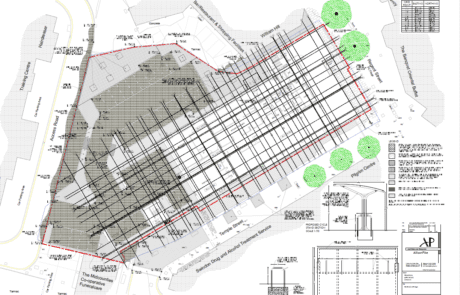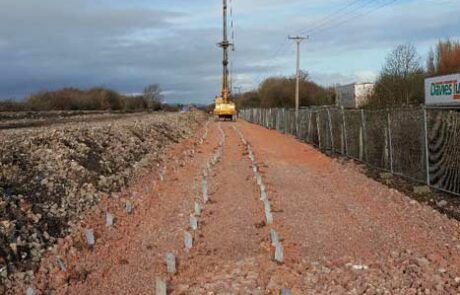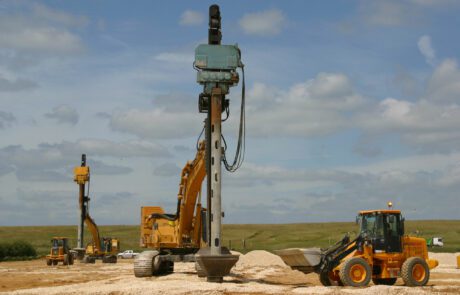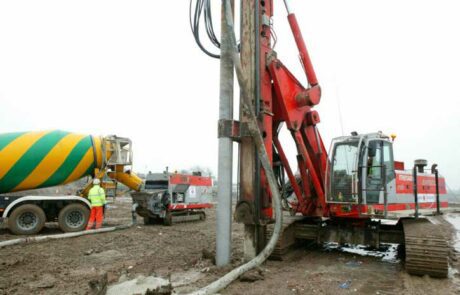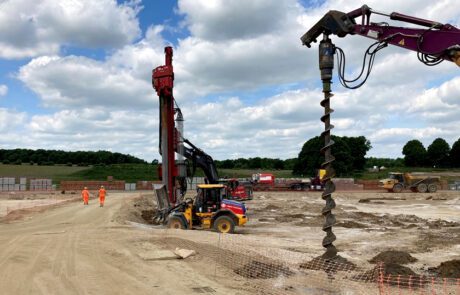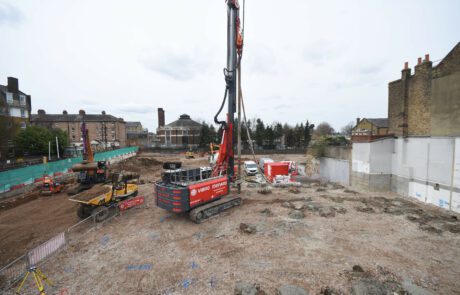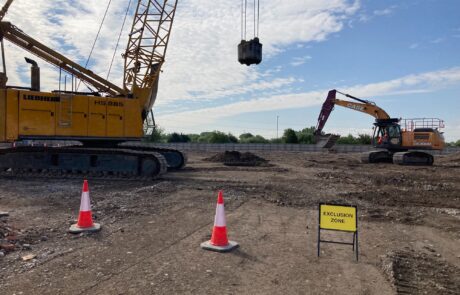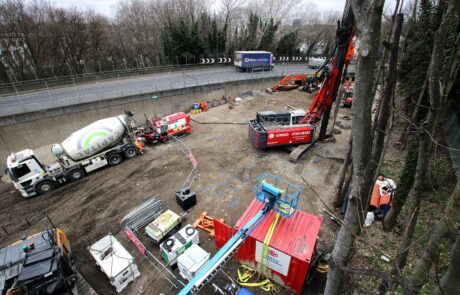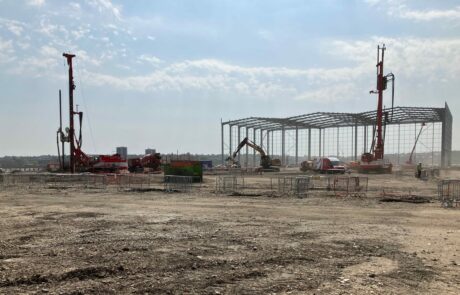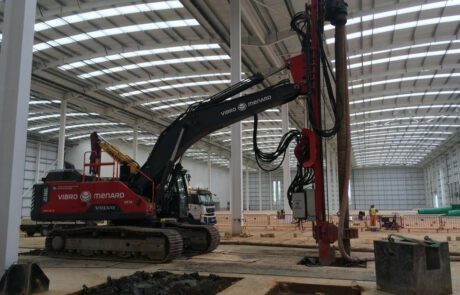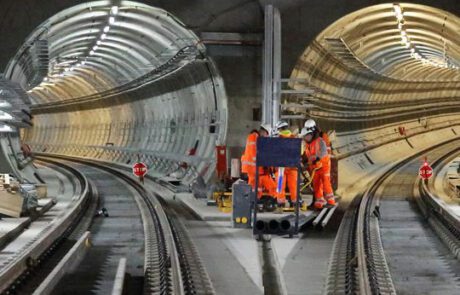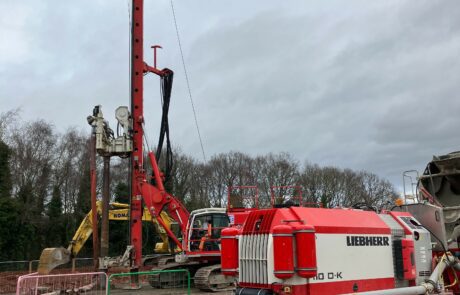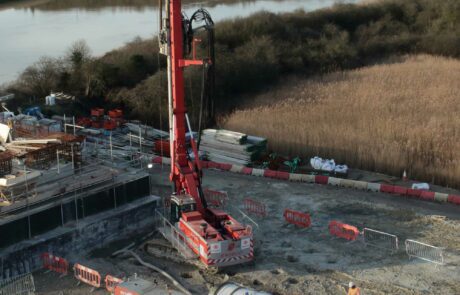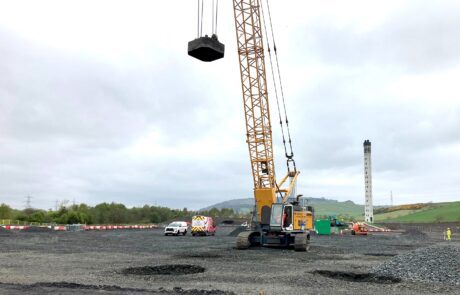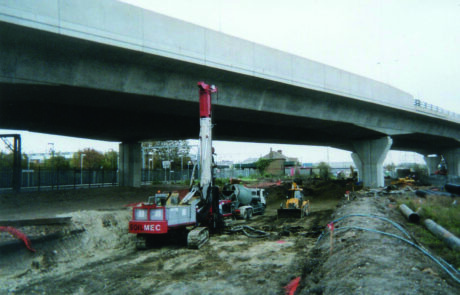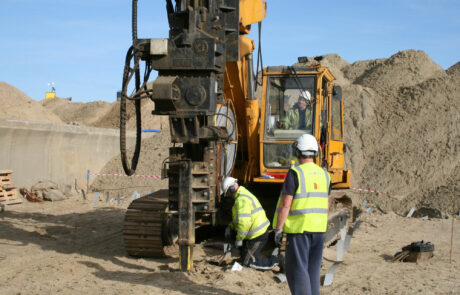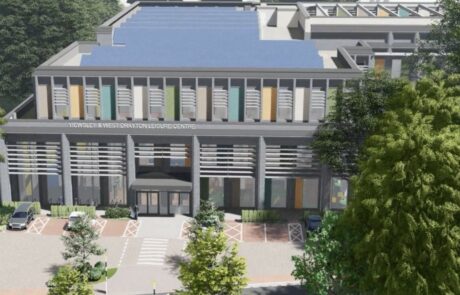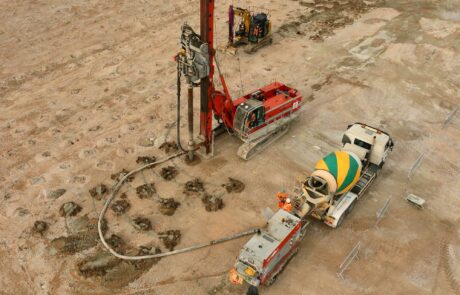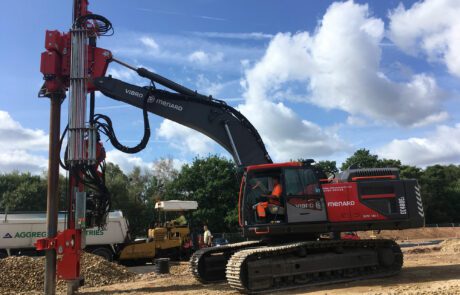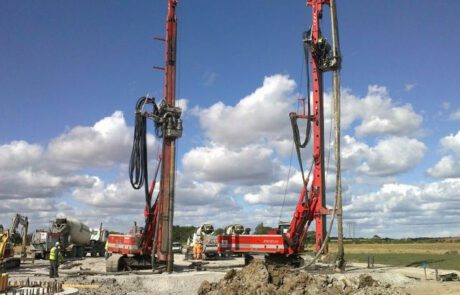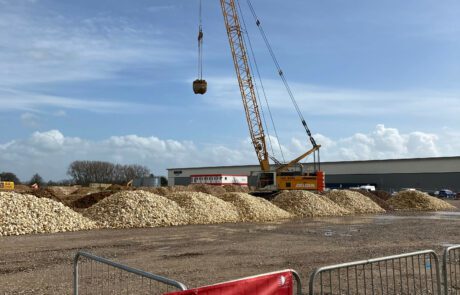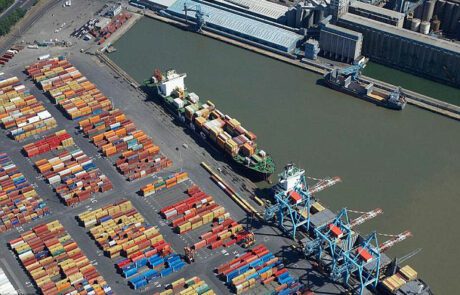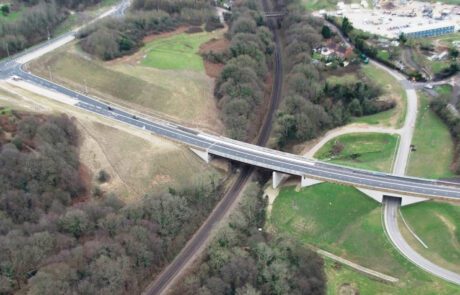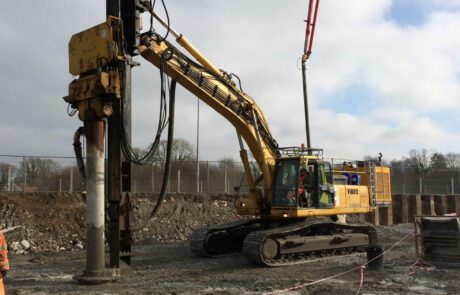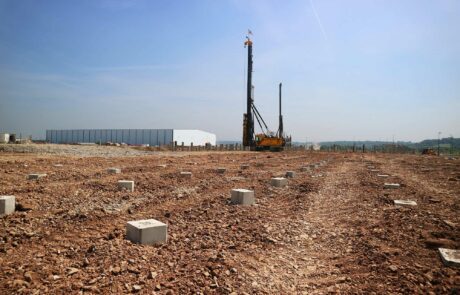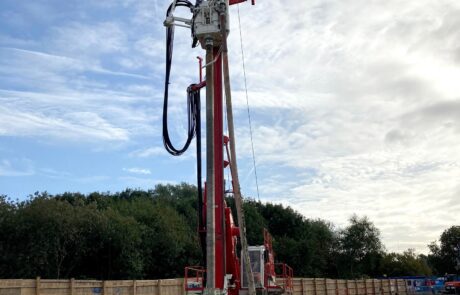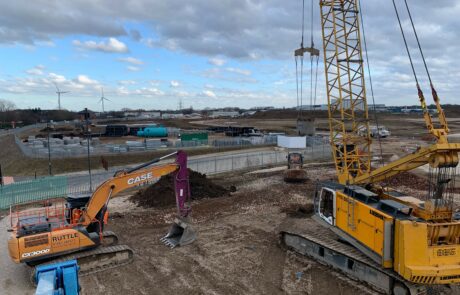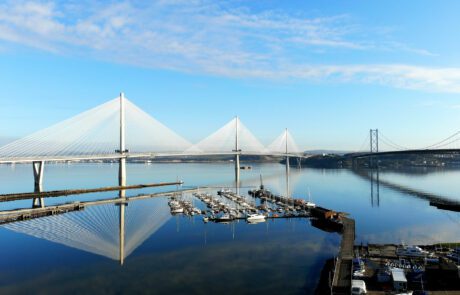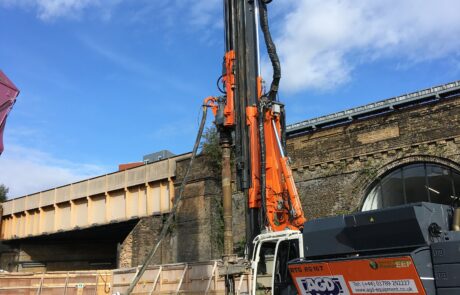OWNER:
Transport Scotland
ENGINEER:
Grontmij
GENERAL CONTRACTOR:
Morrison Construction, Hochtief, Dragados and American Bridge (Joint Venture)
MAIN FIGURES:
4,451 Controlled Modulus Columns (CMC) to depths between 11-18m, totalling 52,675 linear metres
62 soil mixing shear walls, representing a surface of 9,200m3
44 Stress Load Tests on single CMCs
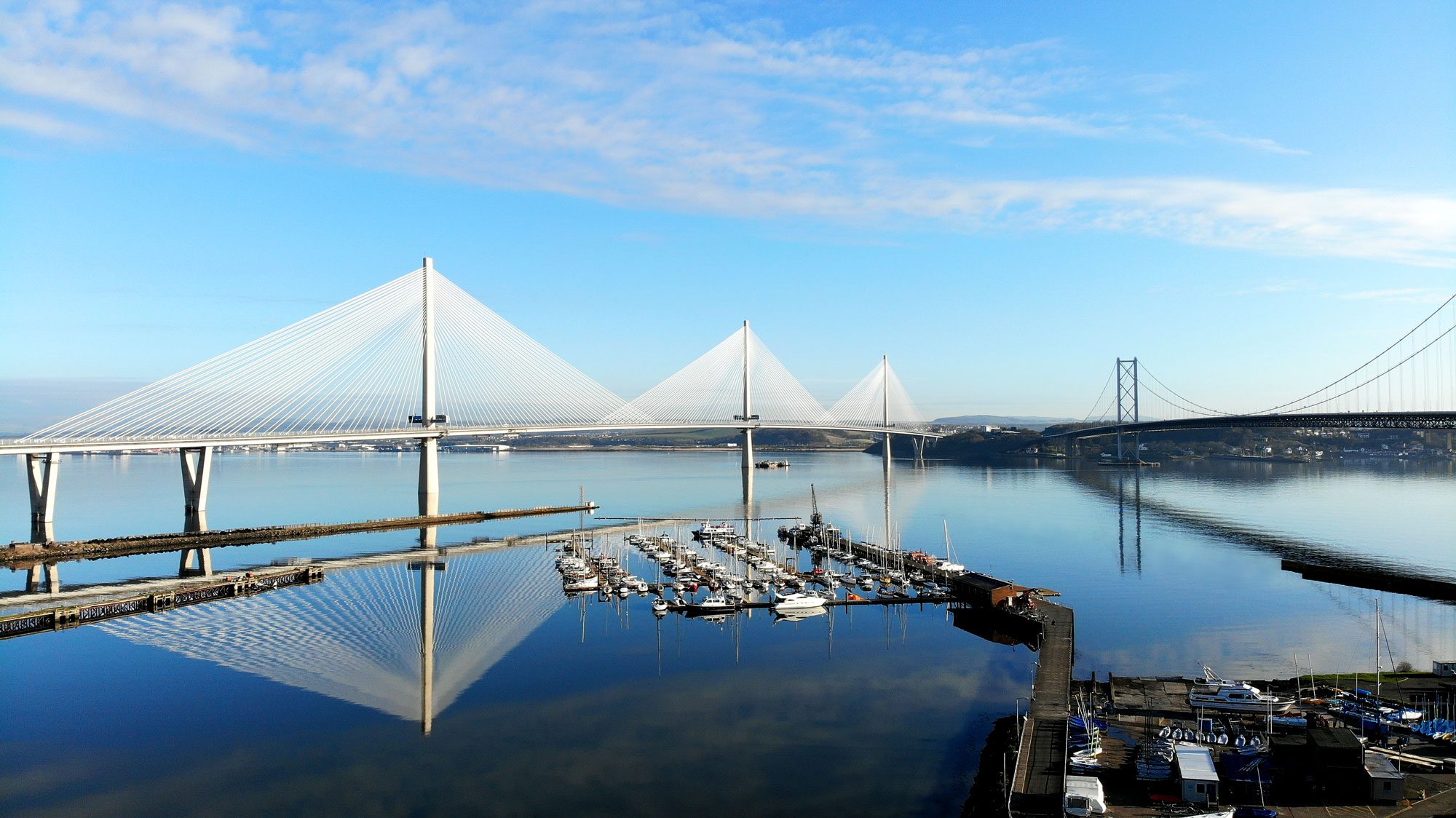
Project Details
The Queensferry Crossing (also known as the Forth Crossing Replacement) involves the construction of a new bridge over the Forth river, North-West of Edinburgh. In order to access to this new bridge, large scale works to the road network had to be carried out both sides of the river.
Menard has been contracted to provide a “design and build” ground improvement solution under the future road B981’s embankments (north side of the river). The aim of this solution was to reduce the total and differential settlements under the loads of the embankments and to guarantee the stability of these 9m embankments.
Ground Conditions
The ground to treat was loose, at the surface was anthropic fill unconsolidated above marine layers which were made of silty sand with clay layers interbedded. This marine layer had a high organic content.
Solution
Menard decided to install 360 mm diameter Controlled Modulus Columns (CMCs) along with shear panels using the Trenchmix technique. The Trenchmix panels have been designed in a few zones in order to mostly reduce horizontal displacements and total settlements. Moreover, to resist horizontal displacement, some of the CMCs have been reinforced by installing steel bars or steel cages.

